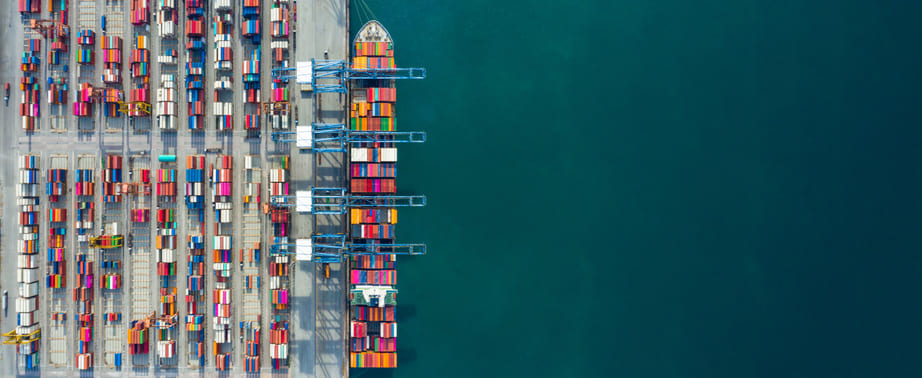Port congestion: everything you should know for 2024
Port congestion will always be a concern in the logistics world. For wine importers and exporters, ports play a crucial role in the global transportation of beverages. The port provides many services in order to receive containers of products arriving or exiting, clearing them through customs, allowing port authorities to carry out inspections, warehousing, truck collection for onward delivery and even rail connections. So when congestion happens and port operations are disrupted, wine companies suffer.
Ports act as the essential maritime exit and entry points of a country’s logistics network, connecting importer, exporters and shipping companies. For instance, the Oakland Seaport serves as the principal ocean gateway for containerized shipments in Northern California. Every year, the port oversees 1,300 acres of maritime facilities, helping to serve a market of 14.5 million consumers.
While port leaders invest in high-quality processes and technologies to keep these ecosystems running smoothly, congestion is still a major issue. For instance, responsible for loading and discharging 99% of the containerized goods in North Carolina, the Port of Oakland is the ninth busiest port in the US.
The seaport utilizes intelligent measures to keep operations efficient, but port congestion is something importers and port managers need to work together to overcome.
What is port congestion?
In the last couple of years, the global shipping crisis caused supply chain disruptions, uncertainties, and an imbalance of the global container fleet and this all lead to port congestion. Ports are a vital component of a country’s logistics network, and are essential to the beverage supply chain. These maritime locations receive containers (for departure), organize them for shipment, and load them onto vessels for the next leg of their journey.
Ports are also an important “entry point” for ships and vessels.
Port congestion is what happens when a vessel arriving at a port is unable to berth, often because too many ships are present at the same time. Issues with port congestion can arise for a variety of reasons, including supply chain delays, macro social economic factors (such as wars) and more.
Other common causes of port congestion include:
- Chassis shortage: This problem has been increasing as more major ocean carriers pull out of the chassis business. Chassis demand can sometimes outweigh supply.
- Weather issues: Shipping processes will always be at the mercy of weather events. However, in some cases, weather conditions can make it too dangerous to operate a port.
- Industrial action: Strikes and labor disputes can reduce the number of professionals on-hand to manage port shipments and transfers.
- Port infrastructure: Not all ports are automatically equipped with the state-of-the-art container and cargo handling equipment businesses need for specific products. Booking berthing slots without considering these factors can cause congestion.
- Customs issues: Some countries implement complex customs procedures for both imports and exports. Lack of effective communication, missing documentation and more can create a backlog of sea-side and shore-side operations.
The impact of port congestion
Port congestion is a frustrating issue. It leads to problems for almost every stakeholder, including the wine importer, shipper, carrier, consignee, and port administration.
It can force shipping companies to deviate from their planned routes, cause delays, and in some instances incur accessorial costs. This can lead to blank sailing, which can also lead to issues for wine shippers, whose pallets or containers may have been booked for departure from an omitted port.
Disruptions in the supply chain can exhaust inventories and lead to a build-up of inaccessible stock stuck en route. For sensitive products like wine and beer, time spent sitting in a port or on a vessel waiting to berth can harm the quality of the product, if the container used doesn't offer adequate protection.
The coronavirus pandemic drew attention to the significant side effects of port congestion. Many port operations slowed and some operations were shut down entirely. Even when operations resumed, the delayed shipments led to higher volumes of traffic and cargo, creating congestion.
Cargo ships were forced to wait for days, even weeks to get berthing slots, and infrastructure limitations further slowed activities. This meant products not only arrived at destinations later than expected, but product quality may have suffered too.
Port congestion can even have an impact on the full supply chain. When ships are delayed at port, products are loaded onto trucks and ships outside of their requested times, leading to chaos on the roads, as well as in the oceans.
How can wine importers navigate port congestion?
Navigating port congestion can be difficult but there are ways to reduce your exposure to it. For instance, if you can keep up to date with the state of the industry and plan ahead you’ll be less likely to experience delays.
To effectively overcome the issue, it’s important to:
- Know your shipping routes: Understanding your shipping routes and trade routes is crucial. It ensures you can choose the right ports for your specific infrastructure needs. It also means you can do your due diligence before a shipment, checking for any impending problems, supply chain issues, labor shortages, and so on.
- Stay up to date: Port congestion is often the result of a sudden problem that can be difficult to fully anticipate. While you might not be able to predict an impending storm or similar issue, monitoring ocean freight news and the state of the industry can help you to detect potential issues before they disrupt your supply chain.
- Plan ahead: Preparation is key to success when managing your logistics process. Careful planning will help you to choose the right container, to ensure the quality of your beverages isn’t compromised in the event of congestion. It also gives you an opportunity to put protections in place, such as insurance.
Partnering with a freight forwarder who specializes in wine logistics can help you navigate through port congestion. Companies like Hillebrand Gori have the expertise required to respond to these situations as they occur. We can provide insights into trade lines with up-to-date news and information.
Additionally, we provide state of the industry reports for a more up-to-date look at the logistics landscape. What’s more, with our real-time shipment management tools, such as myHillebrandgori, you can manage your orders instantly.
Published 15th November 2023
In 2023 (Q2) the average waiting time for ships to enter the top 20 ports in the world was around 6.2 days. This represents a major decrease from 61.2 days in Q4 2021. However, congestion is still an issue in many worldwide ports.
When port congestion occurs, cargo owners sometimes need to pay a fee to the shipping lines, even when vessels are simply left waiting at a port. These fees pay for maintenance and fuel costs, as well as operational costs during the congestion period.
Port congestion can affect all ports. However, the busiest container port in the world at present is the Port of Shanghai, which handles around 40 million TEUs on an annual basis. China is home to some of the busiest, but also most popular ports in the world.
How can we help your business grow?

.png?sfvrsn=69c0fcd4_1)



